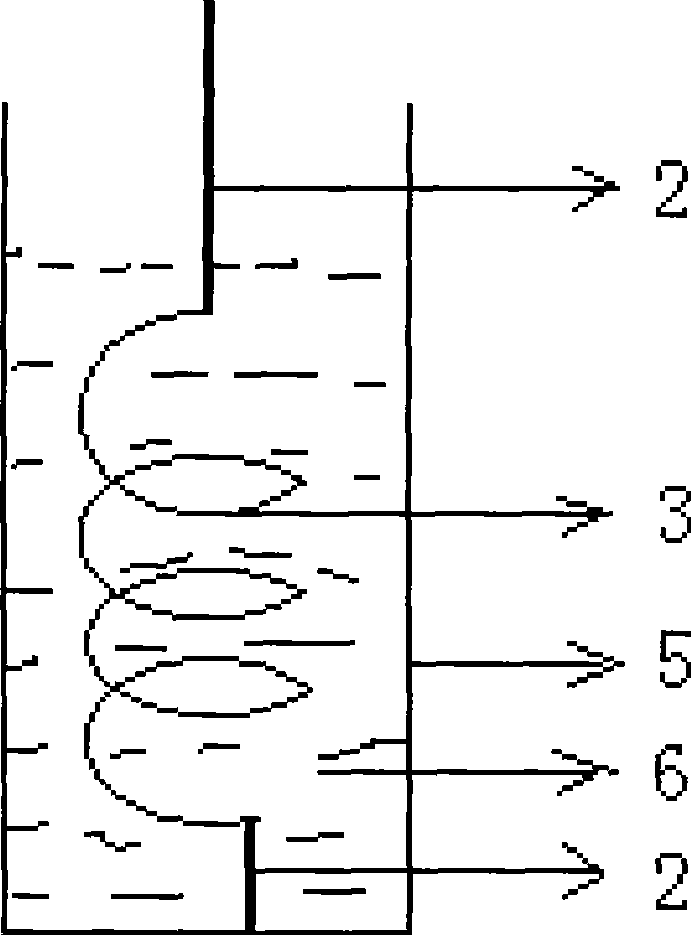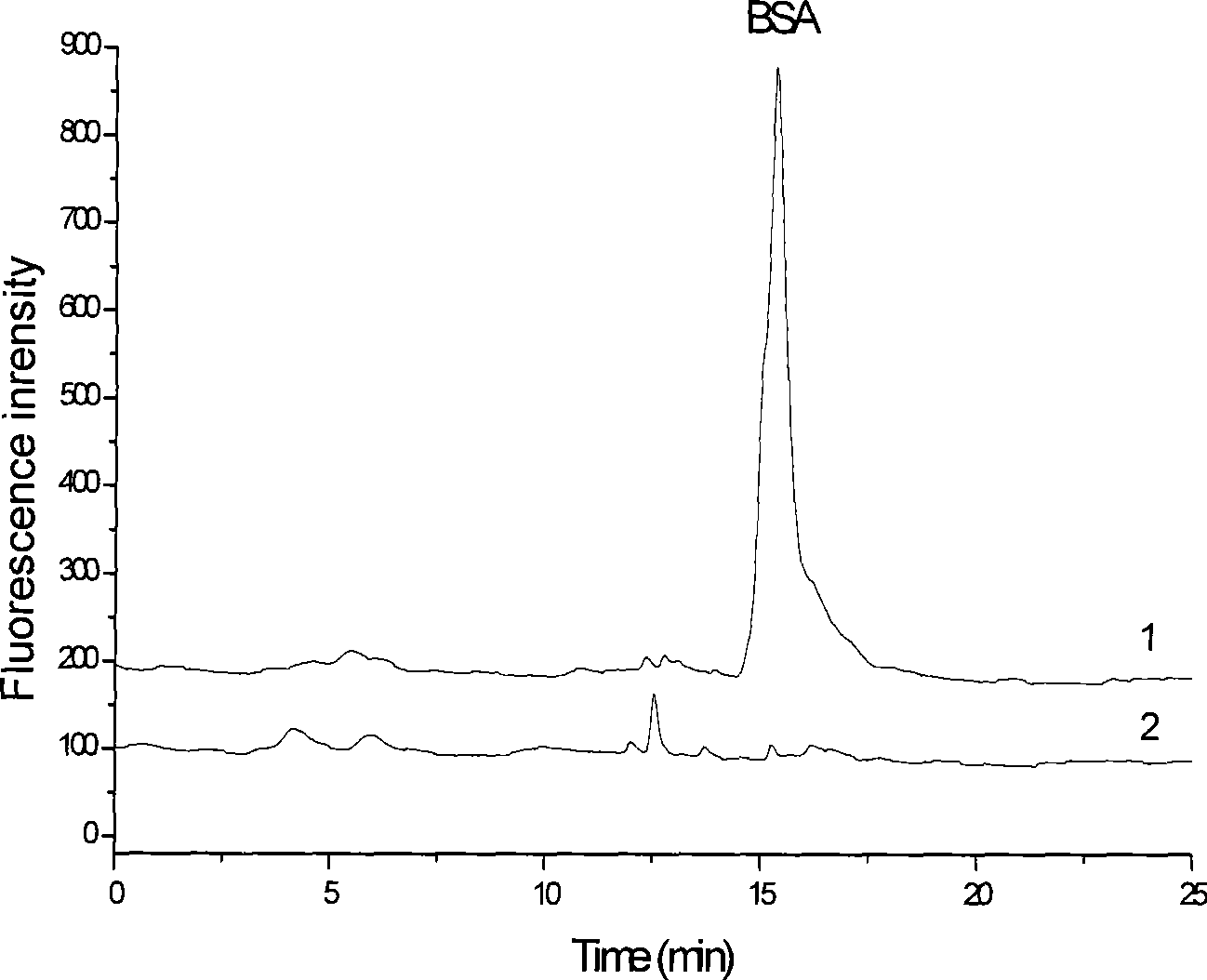Method for in situ fluorescence derivation in protein membrane
A protein and fluorescence technology, applied in the field of protein fluorescence detection, can solve the problems of poor fluorescence derivatization effect and poor reaction effect of low-concentration protein, and achieve the effect of improving fluorescence detection effect, simple device and good derivatization effect.
- Summary
- Abstract
- Description
- Claims
- Application Information
AI Technical Summary
Problems solved by technology
Method used
Image
Examples
Embodiment
[0021] see figure 1 and figure 2 , the method of in situ fluorescence derivation of protein membrane includes two steps: enrichment of protein in hollow fiber membrane; fluorescence derivation of protein after enrichment. The components required for the protein enrichment process include a pump 1 , a capillary 2 , a cellulose acetate hollow fiber membrane 3 , and a rubber sealing head 4 . The protein sample is driven by the pump 1 and continuously flows into the hollow fiber membrane 3 at a certain flow rate. Since the outlet of the hollow fiber membrane is sealed by the rubber head 4, the protein can be enriched in the membrane. After enrichment of protein samples, fluorescence derivatization is performed. The hollow fiber membrane enriched with the protein sample is spirally put into the centrifuge tube 5, and then the fluorescent reagent 6 is added into the centrifuge tube, and the hollow fiber membrane 3 is submerged. The tubes are heated and stirred magnetically for p...
PUM
 Login to View More
Login to View More Abstract
Description
Claims
Application Information
 Login to View More
Login to View More - Generate Ideas
- Intellectual Property
- Life Sciences
- Materials
- Tech Scout
- Unparalleled Data Quality
- Higher Quality Content
- 60% Fewer Hallucinations
Browse by: Latest US Patents, China's latest patents, Technical Efficacy Thesaurus, Application Domain, Technology Topic, Popular Technical Reports.
© 2025 PatSnap. All rights reserved.Legal|Privacy policy|Modern Slavery Act Transparency Statement|Sitemap|About US| Contact US: help@patsnap.com



